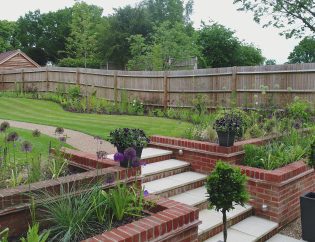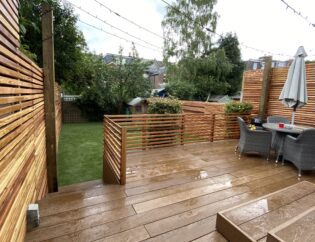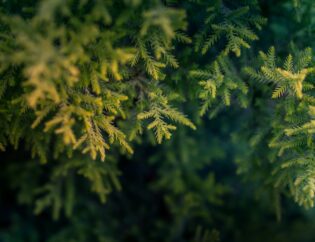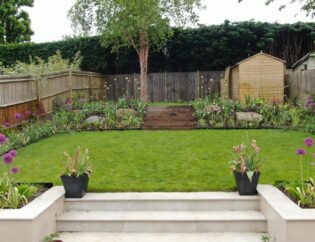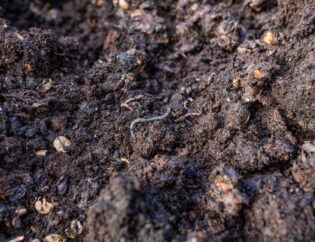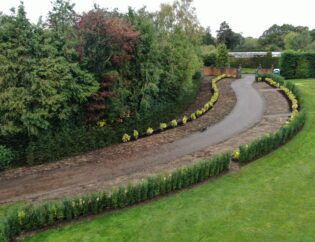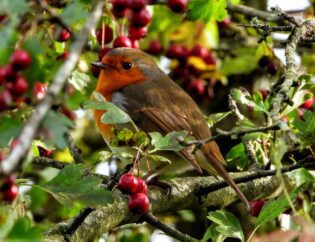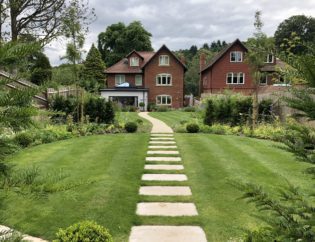
Lawn Care Calendar
A healthy, green lawn is often central to the design and structure of a garden design. But as with any other plant in your garden, some basic care and regular maintenance are needed. To keep it looking its best all year round, Aye has put together this seasonal guide to caring for your lawn.
Spring
As temperatures begin to rise and the days get longer, the growing season starts again. The lawn will be actively growing throughout Spring and Summer and will require feeding, moss-killing, weeding and regular mowing throughout this time. As with so many things in the garden, regular maintenance is the best way to approach a lawn and may avoid the need for renovation later on. In mid-spring (often late March to April), use a proprietary spring or summer lawn fertiliser at the manufacturer’s recommended rates. Feeding the lawn will increase vigour and help prevent weeds and moss from establishing. Apply fertilisers when the soil is moist, or when rain is expected. Spring is also a good time to repair damage to lawns caused by pests, diseases or mechanical damage, so as you spend time in your garden feeding your lawn, keep an eye out for any damage.
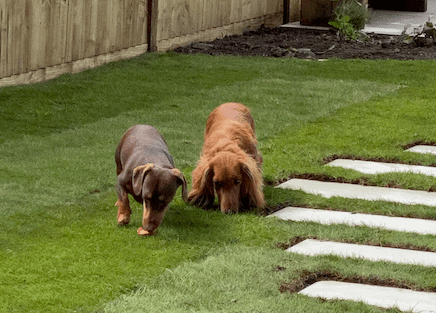
when to mow your lawn
Mowing is carried out mainly between March and October.
- Summer: We suggest mowing once to twice weekly, dropping cuts during periods of drought.
- Spring and Autumn: Mow once a week.
- Winter: Mowing is usually not necessary over the winter months unless the weather is mild, and the grass is still growing. In this case, mow occasionally with a high-cut setting. Do not attempt to do this if the ground conditions are very soft or frozen, or during spells of cold, drying winds.
Remember:
- Dry and shady areas under trees may need less frequent mowing than areas in full sun with good moisture levels.
- Never mow wet or frosty grass, as this can damage the turf and compact the soil. Wait until later in the day when the lawn has dried out or defrosted, or postpone mowing to another day.
Summer
If grass loses its vigour and freshness between late spring and late summer (often May to August), repeat the application of spring or summer lawn fertiliser or apply 15g per sq m (½oz per sq. yd) sulphate of ammonia mixed with four times its weight dry soil. Mixing with soil ensures even distribution and avoids scorching the grass. Apply this mixture in cool, moist conditions and lightly water it in. As an organic alternative, use chicken manure pellets. Repeat fertiliser application a third time if needed six to eight weeks later.
Watering is usually not necessary over summer -even if your grass turns brown and dry over the summer, it will usually recover well when rain returns. However, if you do have to maintain a green lawn, water it when the soil becomes dry but before the grass turns yellow or brown. If the ground is very hard, aerate it by spiking it with a garden fork before watering, to aid water penetration. Watering once a week to every 10 days will normally be sufficient. Ensure that the water reaches a depth of 10cm (4in) after each watering. As a guide, in the middle of summer, 1 sqm (1 sq yd) needs about 20 litres (5 gallons) every seven days.
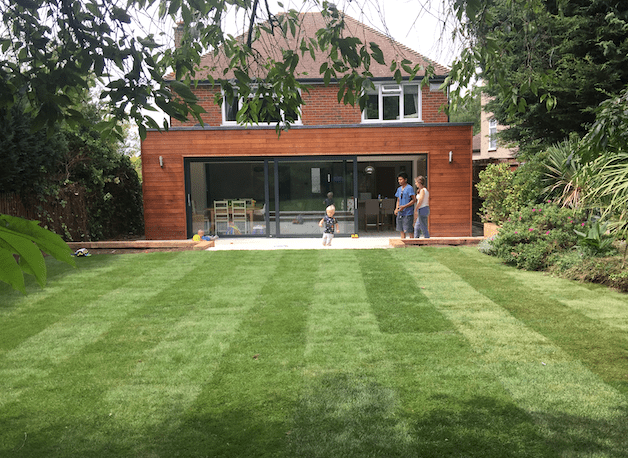
Autumn
Autumn is the time to examine lawns for signs of summer wear-and-tear, and treat if necessary. Any treatment is best carried out during September, when there is still time for the grass to respond before the soil temperatures fall and growth terminates for the season. Do not apply spring or summer lawn fertilisers, chicken manure pellets or sulphate of ammonia after August, as they contain too much nitrogen for autumn use. This would encourage green leafy growth at the wrong time of year, when it could be damaged by winter cold or pests and disease.
Over-seeding After moss or weeds have been removed, or where grass is growing sparsely, over-seeding may be necessary. Early autumn is the best time for this job, but mid-spring is also suitable.
- Break up the surface with a fork and rake it to make a reasonably fine surface.
- Sow grass seed at half the recommended rate or, where there are no recommendations, at 10-15g per sqm (½oz per sq yd).
- Lightly rake to incorporate the seed into the surface.
- If birds are a problem, we suggest that you net the area.
- If the weather remains dry for two or three days after sowing, water gently with a sprinkler.
- Grass should sprout seven to 10 days after sowing.
- In heavily used areas, choose a hardwearing utility mix containing ryegrass. Most lawn grasses do not thrive in shade, so for these areas choose a shade-tolerant mix.
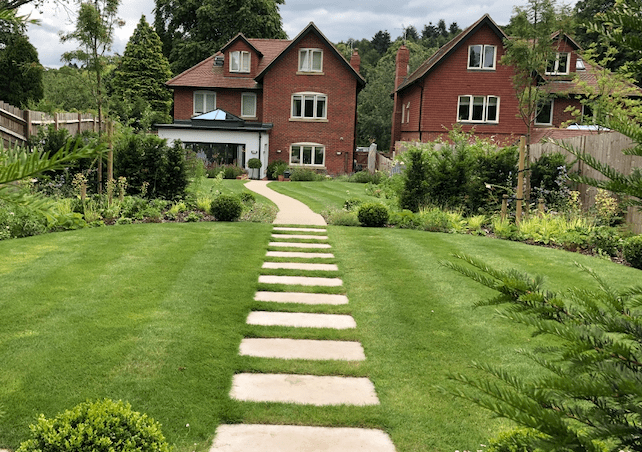
Winter
Over the winter months, the lawn does not grow much, and you won’t need to mow it again until the weather warms up in early spring. Clear fallen leaves and any other garden debris from your lawn regularly. Be careful not to walk on the lawn if there is frost, as it can damage the blades of grass. Remember that the grass plants that make up the lawn are not growing during the winter months, so they won’t be able to repair themselves if damaged.
Aye's trouble shooting tips
Matching over-seeding: When over-seeding the lawn, it can be difficult to match the colour of a new seed mix with your existing lawn. In these circumstances, it may be necessary to over-seed the whole lawn to achieve uniformity of colour and texture.
Dry, shady areas: Areas of dry shade, such as under trees, become sparse very quickly despite adequate care. Consider over-seeding these areas on an annual basis to maintain a dense lawn.
Advice for newly turfed lawns: With a newly turfed lawn, it is important that you do not use any lawn treatment on it during the first 2-3 months of it being laid. When applying any lawn treatment, it is important that you follow the instructions –too much will burn the grass. See our blog post here on how to maintain a newly turfed lawn.

